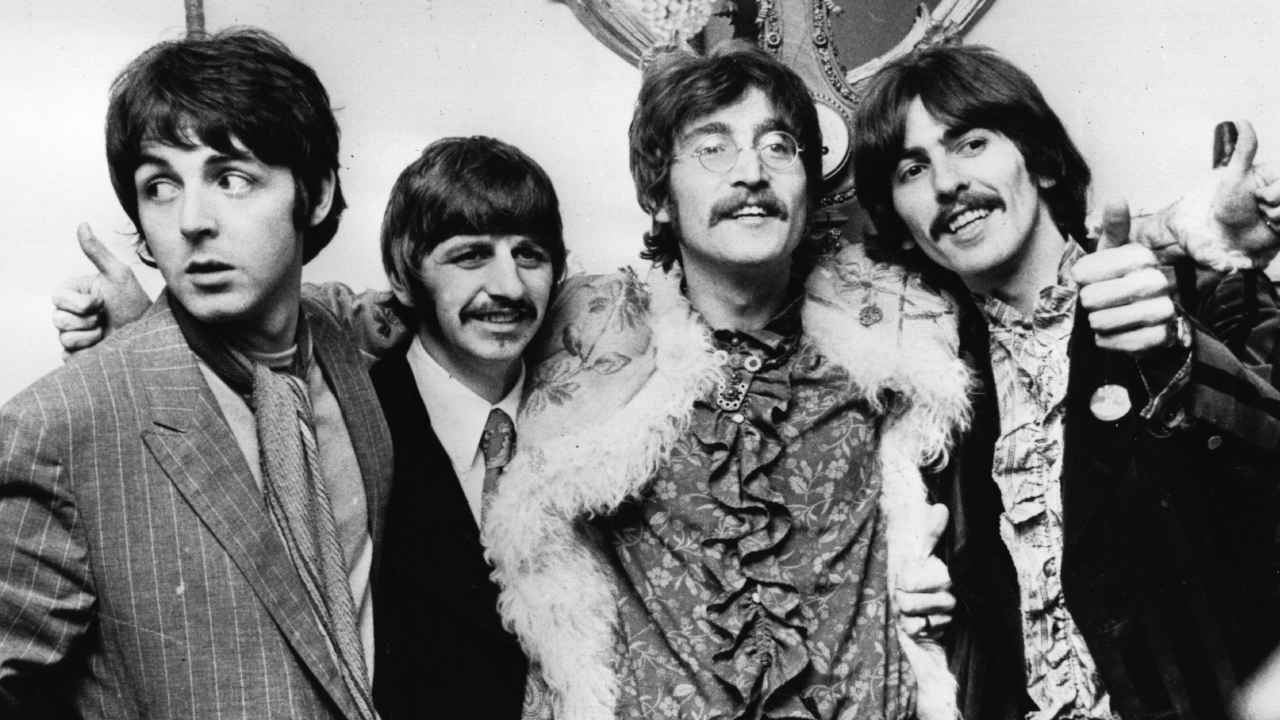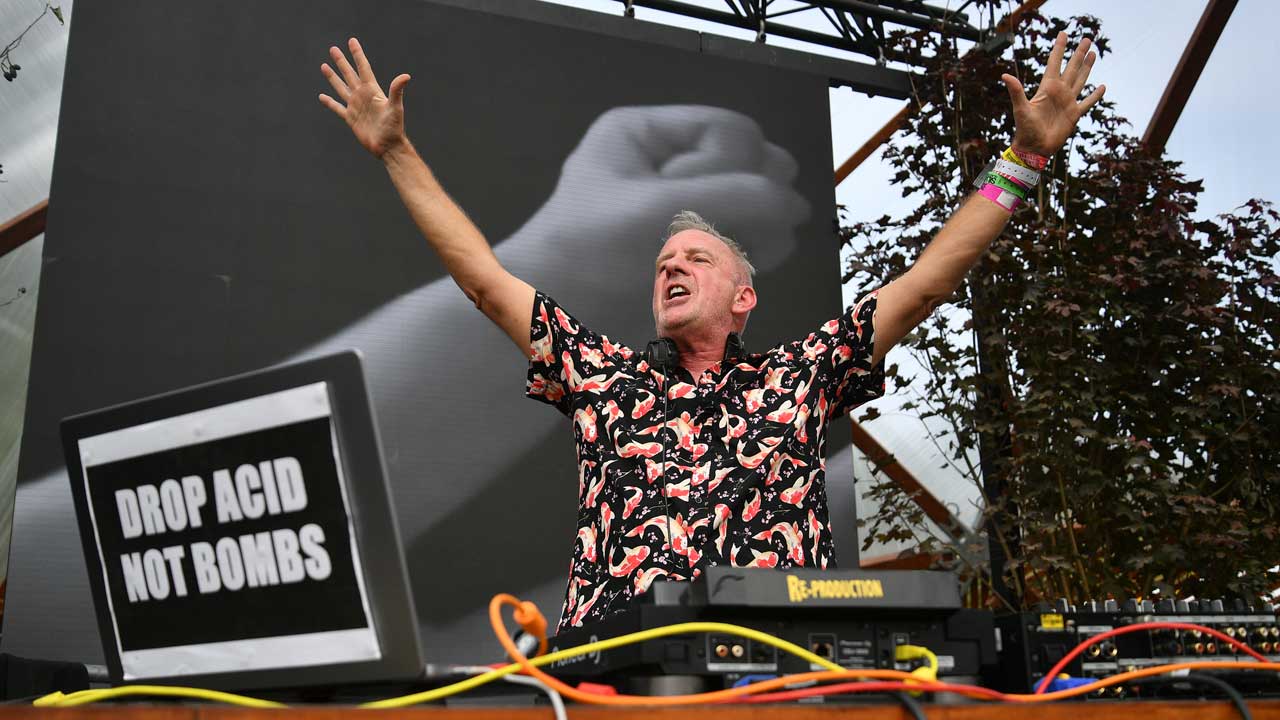The 20 most underrated Beatles songs
Even The Beatles’ most overlooked songs are better than many other bands’ best numbers

The Beatles have a back catalogue like no other. Their biggest hits have become part of our collective DNA, while many of their lesser-known have influenced countless musicians from every genre down the decades.
Yet even The Beatles have songs that have been overlooked, dismissed or just overshadowed by their more famous counterparts. Some of those date from their earlier days, when the speed of their rise tended to obscure the majesty of some of the tracks that only appeared on their album. Others date from the period after they stopped touring to pour every ounce of their creative energy into the studio.
These under-appreciated gems range from bristling rockers to downbeat ballads, shapeshifting rock operas to pure pop gems. Here they are, the 20 Beatles songs that deserve way more love than they get.

20. Savoy Truffle (The Beatles, 1968)
Often dismissed as one of the White Album’s more nonsensical offerings, largely due to lyrics inspired by George Harrison’s good friend Eric Clapton and his appetite for Mackintosh’s Good News chocolates, Savoy Truffle is, in fact, a superior blues-rock tune that highlights Harrison’s growing maturity as a songwriter. It’s also notable for a terrific horn section.
19. The Night Before (Help!, 1965)
A terrific Paul McCartney vocal is further elevated by Lennon/Harrison harmonies and lead guitar breaks – courtesy of Paul and George – in different octaves. John, meanwhile, gets busy on electric piano. The Night Before featured in one of the more memorable scenes from the Help! movie, The Beatles performance on Salisbury Plain crowned by an exploding bomb.
18. There’s A Place (Please Please Me, 1963)
Described by John Lennon as an “attempt at a sort of Motown, black thing”, the title of this McCartney co-write was inspired by a line from the West Side Story tune, Somewhere. The upbeat nature of the music is in direct contrast to its introspective lyric, an early example of The Beatles retreating into a secret inner realm where solitude is a comfort.
17. Don’t Bother Me (With The Beatles, 1963)
Harrison’s first Beatles song was written during a summer season in Bournemouth in August 1963. Despite his dismissive attitude – “At least it showed me that all I needed to do was keep on writing, and then maybe eventually I would write something good” – it’s a double-tracked nugget with a deliciously sour lyric and oddly alluring percussion, courtesy of tambourine, woodblock and an Arabian bongo.
Sign up below to get the latest from Classic Rock, plus exclusive special offers, direct to your inbox!
16. Don’t Let Me Down (b-side of Get Back, 1969)
John Lennon rarely sounded more impassioned with The Beatles, his raw vocal freighted with desperation as he pledges devotion to Yoko Ono: ‘I’m in love for the first time / Don’t you know it’s gonna last…’ The tone of the message is offset by a relatively becalmed musical setting, a soulful purr that features Billy Preston on piano.
15. The End (Abbey Road, 1969)
The last song recorded by all four Beatles, The End serves as delicious coda to the medley that dominates the second side of Abbey Road. Fittingly, each member takes a solo, before a brief piano melody makes way for strings and a celestial harmony asserting that, in the final reckoning, ‘the love you take is equal to the love you make’.
14. I’m Down (Help! b-side, 1965)
Twinned with Lennon’s Help!, McCartney’s less anguished plea for succour is perhaps his most direct vocal homage to Little Richard. It remains one of The Beatles’ most feverish rockers, complete with trembly guitar solo and requisite yelp. Unsurprisingly, I’m Down quickly became a live favourite, the band performing a particularly frantic version at Shea Stadium in August 1965.
13. Baby, You’re A Rich Man (All You Need Is Love b-side, 1967)
Initially earmarked for the Yellow Submarine film, this genuine Lennon and McCartney collaboration fuses components from two unfinished songs into a psychedelic nugget with a bluff chorus. Studio effects abound, from feedback delay to the slightly disorientating use of a clavioline, an early type of synthesiser. Rumour has it that Mick Jagger sings backing vocals at the end.
12. She’s A Woman (I Feel Fine b-side, 1964)
McCartney’s perky rock‘n’roller is expertly fuelled by Lennon’s insistent licks. “John did a very good thing,” McCartney explained to biographer Barry Miles years later. “He just stabbed on the off-beats. Ringo would play the snare and John did it with the guitar.” The otherwise throwaway lyrics contain arguably the first drugs reference in a Beatles song: “Turn me on when I get lonely”.
11. She’s Leaving Home (Sgt. Pepper’s Lonely Hearts Club Band, 1967)
This baroque pop masterclass from Sgt Pepper highlights Paul McCartney’s ability to craft a heart-wrenching lyric, inspired by a Daily Mirror story about a teenage runaway. “She slips out and leaves a note and then the parents wake up,” he explained. “It was rather poignant.” In the absence of George Martin, McCartney commandeered string arranger Mike Leander to rouse a mini-orchestra.
10. I’ll Follow The Sun (Beatles For Sale, 1964)
This dry run for Yesterday was actually written by the teenage McCartney at home in Liverpool in 1959. Although way too brief at under two minutes long (and left on the backburner because it didn’t suit the tough R&B image of The Beatles’ early days) it’s a classic example of his gift for a subtle melody, a tender break-up song clouded in sweet melancholia.
9. The Inner Light (Lady Madonna b-side, 1968)
The last and best of three Indian-flavoured Harrison tunes (after Love You To and Within You Without You), The Inner Light finds him espousing the virtues of Transcendental Meditation. Based on a poem from the Taoist Tao Te Ching, it boasts a sublime melody and a variety of instrumental exotica – sarod, shehnai and pakhavaj – from a crack team of Indian players.
8. Yes It Is (Ticket To Ride b-side, 1965)
In Lennon’s opinion, his attempt to rewrite This Boy didn’t quite work out, but he was clearly deluded. Yes It Is ranks as one of his finest ballads and shows his growing maturity as a songwriter, his yearning lyric buoyed by a tricky time signature and complex three-way harmonies. It’s also distinguished by Harrison’s haunting volume-pedal guitar.
7. Happiness Is A Warm Gun (The Beatles, 1968)
Inspired by the headline from a firearms magazine that George Martin had shown him, Lennon’s mini-suite somehow manages to compress the evolution of rock‘n’roll into less than three minutes. The song flips moods between balletic acid-pop, garagey fuzz and doo-wop, made memorable by the repeated mantra: ‘Mother Superior jump the gun.’
6. Things We Said Today (A Hard Day’s Night, 1964)
Written by McCartney while on a Caribbean holiday with then-girlfriend Jane Asher, Ringo Starr and his soon-to-be wife Maureen, the sombre wistfulness of this song anticipates a future nostalgia for the moment they’re living in. Dramatic key changes heighten the mood as the band switch between folk and pop, driven by Lennon’s rhythm guitar and McCartney’s double-tracked vocal.
5. I’ve Just Seen A Face (Help!, 1965)
Recorded on the same day as Yesterday and I’m Down, this McCartney corker uses a brisk country shuffle to capture the rushing optimism of first love, motored by acoustic guitar. “It was a strange, uptempo thing,” he said of the track, in typically understated fashion. “I was quite pleased with it.”
4. She Said She Said (Revolver, 1966)
An acid-fuelled party in Beverly Hills, during which actor Peter Fonda kept bringing everybody down with the phrase “I know what it’s like to be dead”, provided the impetus for John Lennon’s suitably lysergic meditation on the spiritual quest. Driven by George Harrison’s piercing guitar, it’s also made distinctive by Ringo Starr’s circular drum figures.
3. If I Needed Someone (Rubber Soul, 1965)
The sound of George Harrison’s Rickenbacker was a huge influence on The Byrds, whose lead guitarist Roger McGuinn adopted it wholesale for their early recordings. This Rubber Soul standout sees Harrison repay the compliment, basing his chiming 12-string riff on The Byrds’ version of The Bells Of Rhymney. Peerless harmonies and a great McCartney bassline too.
2. Rain (Paperback Writer b-side, 1966)
Hallucinatory Lennon lyrics, distorted guitars, an insistent bass groove and one of Ringo’s tricksiest drum patterns, Rain is a prime example of The Beatles as a formidable entity. Issued two months before Revolver, its pioneering use of backwards vocals, mutable tempos and faded effects set a precedent for the likes of Tomorrow Never Knows and Strawberry Fields Forever.
1. Hey Bulldog (Yellow Submarine, 1969)
Led by Lennon’s great piano riff, this saving grace from the Yellow Submarine soundtrack features a waspish Harrison solo (courtesy of a new fuzz box) and a McCartney bassline that engineer Geoff Emerick declared “probably the most inventive of any he’d done since Sgt. Pepper”. Later covered by everyone from Alice Cooper and Fanny to Ween and Dave Grohl, this is The Beatles at full tilt.
Freelance writer for Classic Rock since 2008, and sister title Prog since its inception in 2009. Regular contributor to Uncut magazine for over 20 years. Other clients include Word magazine, Record Collector, The Guardian, Sunday Times, The Telegraph and When Saturday Comes. Alongside Marc Riley, co-presenter of long-running A-Z Of David Bowie podcast. Also appears twice a week on Riley’s BBC6 radio show, rifling through old copies of the NME and Melody Maker in the Parallel Universe slot. Designed Aston Villa’s kit during a previous life as a sportswear designer. Geezer Butler told him he loved the all-black away strip.

